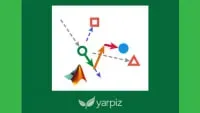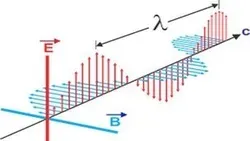
Particle Swarm Optimization in MATLAB

This tutorial provides an overview of Particle Swarm Optimization (PSO) and demonstrates how to implement it in MATLAB from the ground up. Learn how to use PSO to solve complex optimization problems.▼
Course Feature
![]() Cost:
Cost:
Free
![]() Provider:
Provider:
Udemy
![]() Certificate:
Certificate:
No Information
![]() Language:
Language:
English
![]() Start Date:
Start Date:
Self Paced
Course Overview
❗The content presented here is sourced directly from Udemy platform. For comprehensive course details, including enrollment information, simply click on the 'Go to class' link on our website.
Updated in [April 29th, 2023]
This course provides an overview of Particle Swarm Optimization (PSO) and how to use it in MATLAB. Participants will learn how to create PSO from the ground up and how to use Constriction Coefficients to improve the PSO. Additionally, participants will gain an understanding of how PSO can be used to solve optimization challenges.
[Applications]
After completing this course, students can apply the knowledge they have gained to solve various optimization challenges. They can use the MATLAB code they have written to create their own PSO algorithms and use the Constriction Coefficients to improve the performance of the algorithm. Additionally, they can use the PSO algorithm to solve problems in various fields such as engineering, finance, and data science.
[Career Paths]
1. Data Scientist: Data Scientists use PSO to optimize data-driven models and algorithms. They use PSO to identify the best parameters for a given problem and to optimize the performance of their models. As data science continues to grow, the demand for data scientists with knowledge of PSO will also increase.
2. Machine Learning Engineer: Machine Learning Engineers use PSO to optimize the performance of their machine learning models. They use PSO to identify the best parameters for a given problem and to optimize the performance of their models. With the increasing demand for machine learning engineers, the need for those with knowledge of PSO will also increase.
3. Robotics Engineer: Robotics Engineers use PSO to optimize the performance of their robots. They use PSO to identify the best parameters for a given problem and to optimize the performance of their robots. As robotics technology continues to advance, the demand for robotics engineers with knowledge of PSO will also increase.
4. Artificial Intelligence Engineer: Artificial Intelligence Engineers use PSO to optimize the performance of their AI models. They use PSO to identify the best parameters for a given problem and to optimize the performance of their models. With the increasing demand for AI engineers, the need for those with knowledge of PSO will also increase.
[Education Paths]
1. Bachelor of Science in Computer Science: This degree path focuses on the fundamentals of computer science, including programming, algorithms, data structures, and software engineering. It also covers topics such as artificial intelligence, machine learning, and robotics. With the increasing demand for automation and AI, this degree path is becoming increasingly popular.
2. Master of Science in Artificial Intelligence: This degree path focuses on the development of AI systems and their applications. It covers topics such as machine learning, deep learning, natural language processing, and computer vision. With the increasing demand for AI-based solutions, this degree path is becoming increasingly popular.
3. Doctor of Philosophy in Machine Learning: This degree path focuses on the development of machine learning algorithms and their applications. It covers topics such as supervised and unsupervised learning, reinforcement learning, and neural networks. With the increasing demand for AI-based solutions, this degree path is becoming increasingly popular.
4. Master of Science in Robotics: This degree path focuses on the development of robotic systems and their applications. It covers topics such as kinematics, dynamics, control, and navigation. With the increasing demand for automation and robotics, this degree path is becoming increasingly popular.
Pros & Cons
-

Clear explanations.
-

Great learning experience.
-

Engaging content.
-

Perfect introduction.
-

Very well explained.
-

More examples needed.
-

Principles not explained.
-

Poor explanation of constraints.
-

No supporting material.
-

No application of PSO in neural networks.
Course Provider






